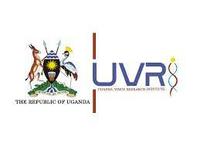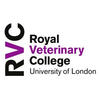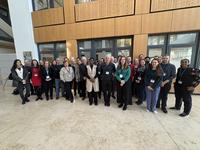Home










News and Updates
Publication, 9th August 2025
MAIT and other innate-like T cells integrate adaptive immune responses to modulate interval-dependent reactogenicity to mRNA vaccines.
Authors: Amini A., Garner L.C., Shaw R.H., Wrigley Kelly N., Adele S., Skelly D.T., Dejnirattisai W., Greenland M., Liu X., Heslington A., Hackstein C-P., Murray S.M., Riquelme Vano C., Stafford L., Johnson S., Sayaf K., Pudjohartono M.F., Clutterbuck E.A., PITCH Consortium, Com-COV Study Group, Bibi S., Conlon C.P., James T., Jeffery K., Kronsteiner B., Mentzer A.J., O’Shea D., Ramasamy M.N., Screaton G.R., Snape M.D., Hogan A.E., Barnes E., Lambe T., Dunachie S.J., Provine N.M., Klenerman P.
We studied why some COVID-19 vaccine doses feel worse than others. Comparing adenoviral vector and mRNA vaccines, we found that mRNA vaccine boosters trigger a more rapid, potent inflammatory burst - driven by vaccine (or infection) induced memory T cells and amplified by ever-present innate-like T cells. Leaving a longer gap between doses blunted this burst and was linked to fewer side-effects. Therefore modifying dose timing - or the intermediate 'immune amplifiers’ - could help make future vaccines safer and more tolerable for SARS-CoV-2 and other infections.
Publication, 1st October 2025
Long-persisting SARS-CoV-2 spike-specific CD4+ T cells associated with mild disease and increased cytotoxicity post COVID-19
Authors: Tao Dong et al
A study which found dominant T cell responses years after infection are associated with mild COVID-19 disease, and likely play important protective roles to following viral infections.
Publication, 15th September 2025
Optimization of the Blocking and Signal Preservation Protocol in High-Parameter Flow Cytometry
Authors: Oliver T. Burton, James Dooley, Adrian Liston
A protocol for flow cytometry stemming from the optimization we have done for the IMMPROVE flow cytometry platform. Tips and tricks for getting better and more consistent results.
Read Now (Current Protocols, Wiley.com)
Publication, 19th September 2025
Introducing the Dish Soap Protocol: A Unified Approach for Multi-Modal Intracellular Staining
Authors: Oliver T. Burton, James Dooley, Adrian Liston
A protocol for flow cytometry aiming to optimize the simultaneous detection of difficult markers, as we have done for the IMMPROVE flow platform. In this case, the protocol is a cheap alternative that may be especially useful in resource-limited laboratories.
Read Now (Current Protocols, Wiley.com)
Publication, 22nd July 2025
Ex vivo model of functioning human lymph node reveals role for innate lymphocytes and stroma in response to vaccine adjuvant
Read Now (Cell Reports, Cell.com)
23rd January 2025
Collaboration, Insight and Innovation:
Highlights from the IMMPROVE Annual Scientific Meeting
Our Objectives
The first generation of COVID-19 vaccines were highly effective at preventing serious disease, serving an essential role in mitigating the effects of the pandemic. Now that the urgency of the initial pandemic is waning, there is time to draw upon the wealth of experience and new learnings to re-evaluate immune-mediated protection; using this knowledge to improve future vaccines.
The consortium's vision is to focus on mechanistic understanding of the induction, and maintenance of the immune responses underpinning broad protective memory responses, with a focus on mucosal immunity.
The work of the consortium is broken down into five work packages. Find out more about each work package below.
MemoryTo understand the immune mechanisms required for long-lived and broad protection against SARS-CoV-2, and how to effectively induce these responses through vaccination. |
LocationTo understand the duality of systemic and local immunity against SARS-CoV-2, their corresponding roles in protection against disease and infection/transmission, and how to replicate these advantages through vaccination. |
ProtectionTo define mechanistic correlates of protection, empowering next-generation pan-coronavirus vaccine development. |
DataTo build resilient long-term capacity in pandemic preparedness via bolstering the global network of scientists; training, developing and empowering early-career researchers in vaccinology and vaccine design; and augmenting the biosciences capability for vaccine development and rapid response to emergent pathogens. |
ImpactBuild upon the strong links of the consortium with the public, extend the network of public engagement and involvement to early-career researchers, and act as a bidirectional bridge between the public and vaccine developers / policy makers to aid support and uptake of vaccination. |



















